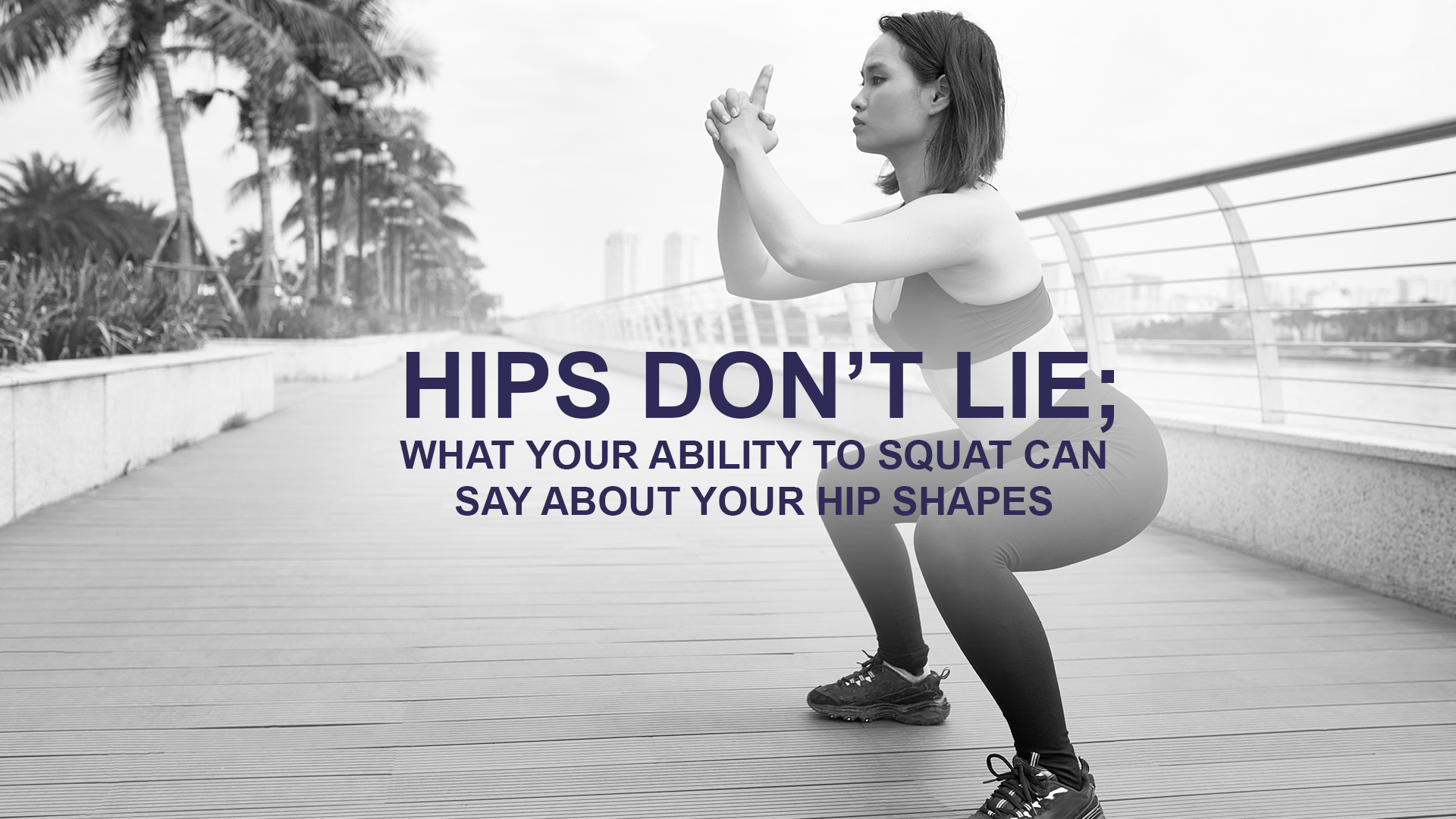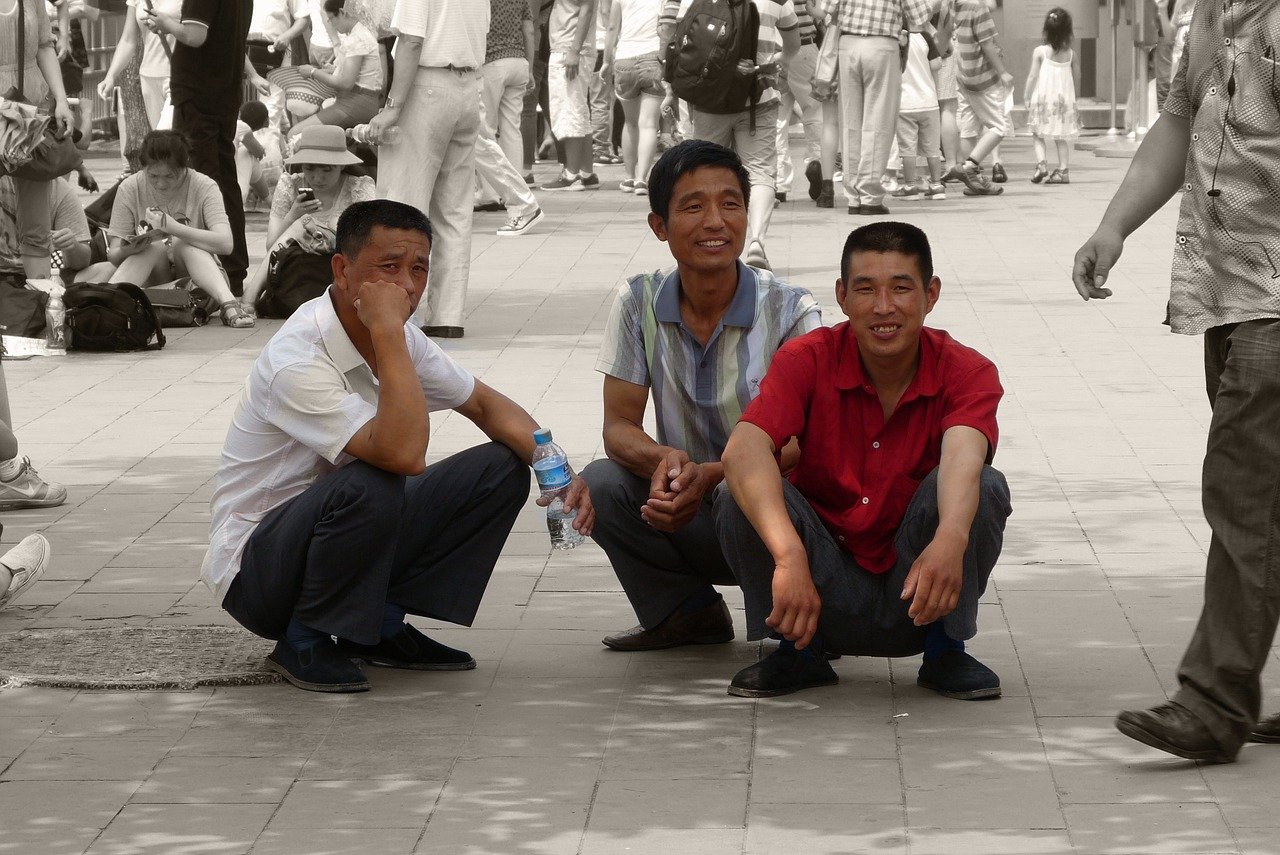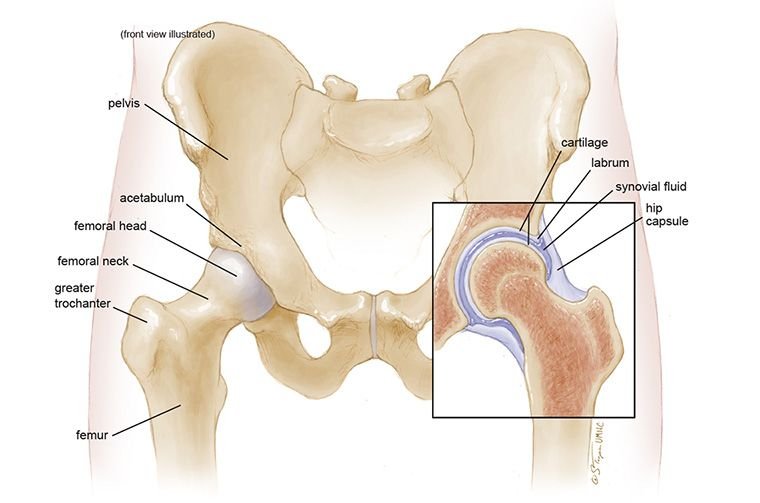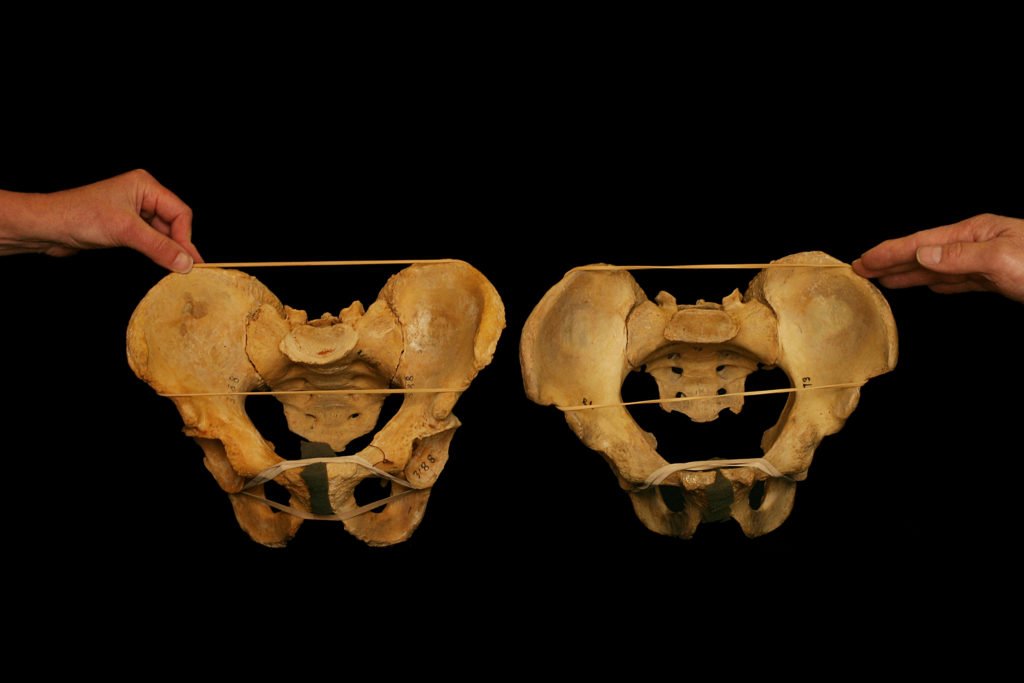Hips don’t lie; what your ability to squat can say about your hip shapes
Squatting is a popular exercise that works the legs, lower back, and core muscles. It can assist people in strengthening their muscles and burning fat. The problem comes in when people suggest that everyone can do it in the same way.
You may have heard of the Asian Squat. It’s popular, not made for everyone. It’s a deep squat performed by Asian people for both practical and cultural reasons.
But why are we discussing this?
It has become a popular pose, but even more so, a popular joke that Caucasians can't perform it and it’s time to set things straight.
Squatting, regardless of the type, can be easy for some and difficult for others. But, with practice and the correct posture guidance from your physio, the asian squat could become a very comfortable resting position. The thing is, you should not be made fun of for not being able to do a squat, when at the end of the day, it could just be because we all have different bodies.
Where does it all start? As babies, we are born with incredible mobility, but we also grow at a rapid rate during the first year of life. Unfortunately, because of this, we tend to lose quite a bit of that mobility.
But don’t worry, you can save yourself from frustration. There are a few things we can look at that could affect your ability to do a comfortable and pain-free asian squat.
Hypermobility in the Asian Population
Mobility is the term used to describe how our soft tissues—including our muscles and fascia—affect how we move. Our capacity to move freely can be hampered when our tissues are shortened or become stiff. (This is understandably one of the reasons why sitting at a desk for hours could be bad for you.)
However, our mobility can also exist on the other end of the spectrum. Hypermobility refers to joints that can move farther than their typical range of motion. Some people colloquially describe it as “double-jointed”. As a result, your joints are extraordinarily flexible. (Clinic, 2022)
Why is this relevant? Well, some studies have suggested that certain population groups have “more” hypermobility than others, especially Asians. (Shahid et al., 2013)
This might be one of the reasons why you are struggling with your ability to squat in comparison to others.
Your genetics play a much bigger role than you may think, the reason why some people have more hypermobility or ligament laxity has to do with their collagen make up. Let’s break it down:
1. Collagen
Collagen is a type of protein that helps to keep your skin, bones, and muscles healthy. Collagen also aids in motion range in your joints.
Therefore, if you have a collagen deficiency, you may have trouble squatting since collagen helps to keep those joints flexible.
2. Ligaments:
Ligaments are tough tissue bands that connect your bones at the joints. They offer support and stability. Your ligaments help guide joint motion and prevent excessive movement at the joint.
3. Ligamentous Laxity
Depending on genetic factors, people will have variations in how stretchy their ligaments are. Overly extensible ligaments can lead to ligamentous laxity and possibly hypermobility.
Hopefully now you can see that it’s not all about skill, it could come down to genetic elements such as your collagen makeup, range of mobility and/ or the flexibility of your ligaments. (Cluett, 2022)
2. The structure of our hip
So you think the genetic reasons stop there? Absolutely not.
One of the other reasons why you might struggle doing an Asian squat could be linked to your hip ratios and structure.
The hip joint is a ball and socket joint that connects the femoral head to the pelvic acetabulum.
The hip joint's primary function is to provide dynamic support for the weight of your body and “booty” while facilitating force and load transmission from the axial skeleton to the lower body for movement.
In general, what allows us to squat in different ways also has a lot to do with our hip structure and bone ratios. An example of this could be the length between the femur and tibia length (thigh to the shin length), or the ratio between your legs and torso. These ratios along with other bone structure variations can determine your hip structure. (Dudda et al., 2022)
Again, why does this matter? Studies suggest that due to the variation between population groups, some find certain squatting position more comfortable to do, while others might just not have the same ratios, affecting their ability to naturally rest in certain positions.(Dudda et al., 2022)
With this in mind, I am sure you can start seeing why it would be unfair to make fun of people for not being able to move their bodies in certain ways that others may find easy. We are all different and we need to learn how to move our bodies in ways in which they are capable of, or just be patient when practicing and trying something that might be more difficult for your body type.
3. Bone Shape
If you want to get more technical, it’s not just ratios and structure, but also the actual shape of your bone that could affect your ability to squat. Morphology is the study of shape and structure and it plays a big role in how your body moves. It shouldn’t come as a surprise that you have a different bone structure than your best friend (or anyone else for that manner).
Even the smallest thing such as how your femur and hip socket are shaped (to fit together) can vary from person to person and again, impact the way you move. It could be the depth of the socket, the height of your socket, even the width of your hips and the size of your femur head. (Glenn, 2022)
Studies suggest that the way our bones shape may be connected to our ancestors and how they used their body over generations. (Gorvett, 2022)
Wide or Narrow Hips in a squatting context
There is no single way in which hips are formed and placed. Some of us will always have narrow hips no matter how much we squat and some of us will always have wide hips, no matter how much we try to cut down. It’s important to know how you can position your body during exercise to best help keep your hips strong and healthy.
Chances are if you have wider hips, it's because you have a horizontally positioned femur, in which case you need to be careful of physical exercise that works the outside of your hips such as wide squats or high leg lifts. When squatting, it might help to turn your feet out to clear your hip from the pelvis and remove some of the pressure.
On the other hand, if you have narrow hips (or if you struggle to balance on one leg), you might have more vertically orientated hips. So, to take extra care of them during exercise, it would help to find support, such as a wall when doing balance work and squats.
If you fall into this “group of hips” you also need to be careful of high-impact loading activity on your hips, such as hopping, jumping and running. However, if you are not sure of your hip type and how to best protect it during exercise, feel free to contact us. (insert hyperlink)
How do I position myself for an asian squat?
Step 1: Find a comfortable space, look for something around waist-height to grab onto, such as a window, a bar, a table, etc. Place yourself in front of the object you'll be holding onto and make sure it's within easy reach.
Step 2: Get everything in order. Plant your feet slightly wider than shoulder width apart, with your toes pointed slightly outward. Prepare yourself to sit, it’s time!
Step 3: Holding on for support, slowly lower your weight until you're "sitting." You should try to find your balance, but keep the squat as low as possible. Try to get your but as close to touching your ankles as possible, if not make sure you are at least touching the back of your legs.
Step 4: Maintain this position for 10 to 20 seconds before getting up. This might be hard to do at the start, but with time you will be able to get up without having to hold onto support. (The majority of the work in rising from a deep squat will be done by your thigh muscles.)
Step 5: Take a break and then repeat. Allow your legs to relax for a minute or two before repeating the deep squat. Aim for three squats per day, 10 to 30 seconds per squat. Increase the frequency and duration on a regular basis until you see results.
We hope this saves some of your frustration, it’s always good to keep mobile and explore new movements. If you are pain free doing an asian squat, then go ahead and practise, because you never know how far you will get. However, if you can't, or you are just experiencing hip pain or knee pain then maybe you are not set up for it or you should come in for a consultation.
We are all built differently,
The structure of our hips will likely govern how we should be moving and we shouldn't all be aiming to move alike.
However, if you are looking to give the asian squat a go, to improve the health and strength of your hips, knees, ankles and even spine, take a minute and see how low you can go! As long as the motion doesn’t increase pain within the hip itself, there may be some benefit to “drop it like it’s hot!
If you're not sure how you should be squatting or how to perfect the asian squat for your hip type, feel free to contact us to start your squatting journey the healthiest way possible.
References
Clinic, C., 2022. Joint Hypermobility Syndrome: Symptoms, Causes, Diagnosis & Treatments. [online] Cleveland Clinic. Available at: <https://my.clevelandclinic.org/health/diseases/21763-joint-hypermobility-syndrome#:~:text=Hypermobility%20means%20your%20joints%20can,any%20pain%20or%20medical%20issues.> [Accessed 19 July 2022].
Cluett, 2022. Ligamentous Laxity in Knees, Shoulders, Ankles, Neck, and Whole Body. [online] Healthline. Available at: <https://www.healthline.com/health/ligamentous-laxity> [Accessed 19 July 2022].
Glenn, 2022. Find Your Perfect Squat: Your Squats Different To Mine - The FMC. [online] Functionalmovementclub.com. Available at: <https://www.functionalmovementclub.com/blog/find-your-perfect-squat/> [Accessed 19 July 2022].
Gorvett, Z., 2022. How modern life is transforming the human skeleton. [online] Bbc.com. Available at: <https://www.bbc.com/future/article/20190610-how-modern-life-is-transforming-the-human-skeleton> [Accessed 19 July 2022].
Shahid, M., Mahroof, S., Wu, F., Bourne, K., Jose, R. and Titley, G., 2013. Are Asian hands more flexible than their Caucasian counterparts?. Hand Therapy, 18(3), pp.71-76.
Dudda, M., Kim, Y., Zhang, Y., Nevitt, M., Xu, L., Niu, J., Goggins, J., Doherty, M. and Felson, D., 2022. Morphologic differences between the hips of Chinese women and white women: Could they account for the ethnic difference in the prevalence of hip osteoarthritis?.






